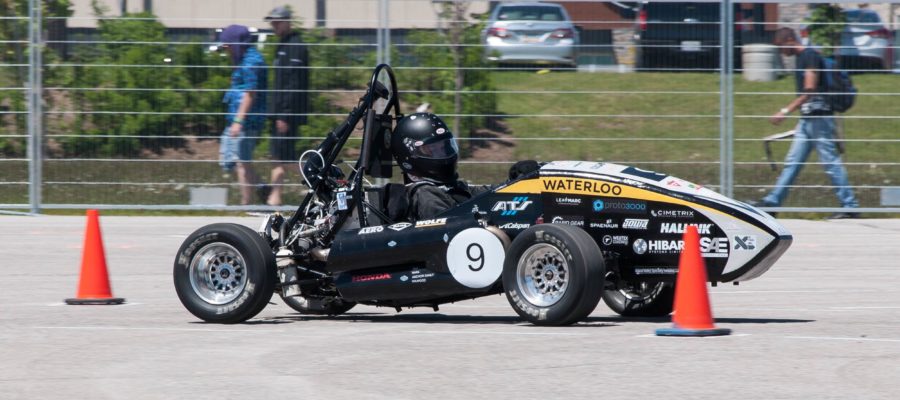University of Waterloo’s 3D Printed MotorSport Car Part
Automotive
Last February, we worked closely with the University of Waterloo’s Formula SAE team as a Gold sponsor to help produce the best car possible in preparation for Formula SAE 2017 in Michigan. Formula SAE is a student competition where University teams around the world compete to design and develop a small Formula-style race car where it is then evaluated for its speed and potential as a production item.


The Waterloo team reached out to us for assistance in printing a restrictor for use with the intake of their car. Due to competition restrictions, the entry diameter of the intake could only be as large as 25.4 mm. We then worked together to print a restrictor to maximize airflow in hopes of producing the best performance possible for the team’s race car. Our final print was done using an FDM process on the Stratasys Fortus 400mc in ABS material while finishing it with an epoxy coating to create a sealed component. According to Chris McAloney, our Engineering Operations Manager here at Proto3000, one of the biggest challenges of this print was applying the epoxy coat due to the complex shape of the part. Normally the coating would be spread and smoothed down to create a seal without affecting the geometry. There were specific sections of their design that could not have an epoxy such as mounting locations; our team used methods such as painting and masking techniques to achieve the right seal.

We spoke briefly with Akmal Syed, the Project Manager of the University of Waterloo’s Formula SAE team, about the use of 3D printing technology for their car. He explains that the technology allowed for high customization in low volume without the need for conventional molds and CNC methods. Using a highly durable thermoplastic combined with CAD software, it was easy to get an accurate measure of the part’s strength and how much stress it could take. 3D printing gave the student team the capability of functional application and freedom of iterative design without the worry of high costs.

The University of Waterloo Formula SAE team performed well and finished 33rd out of 120 teams overall as well as 3rd place in acceleration as a result of extensive dyno tuning. Unfortunately our 3D printed restrictor broke off, not because of print quality but due to bending induced by a mount that was added during the car’s design phase. This provides a perfect statement of how 3D printing can be beneficial for these types of instances. Although a functional application was certainly the goal, this proves that using this technology can play a huge role in education and prototyping as it allows an engineering team to learn from design flaws quickly and make iterative changes at a relatively low expense.

If you are interested in exploring this solution for your organization please speak with one of our additive manufacturing experts https://goo.gl/qHnouO
